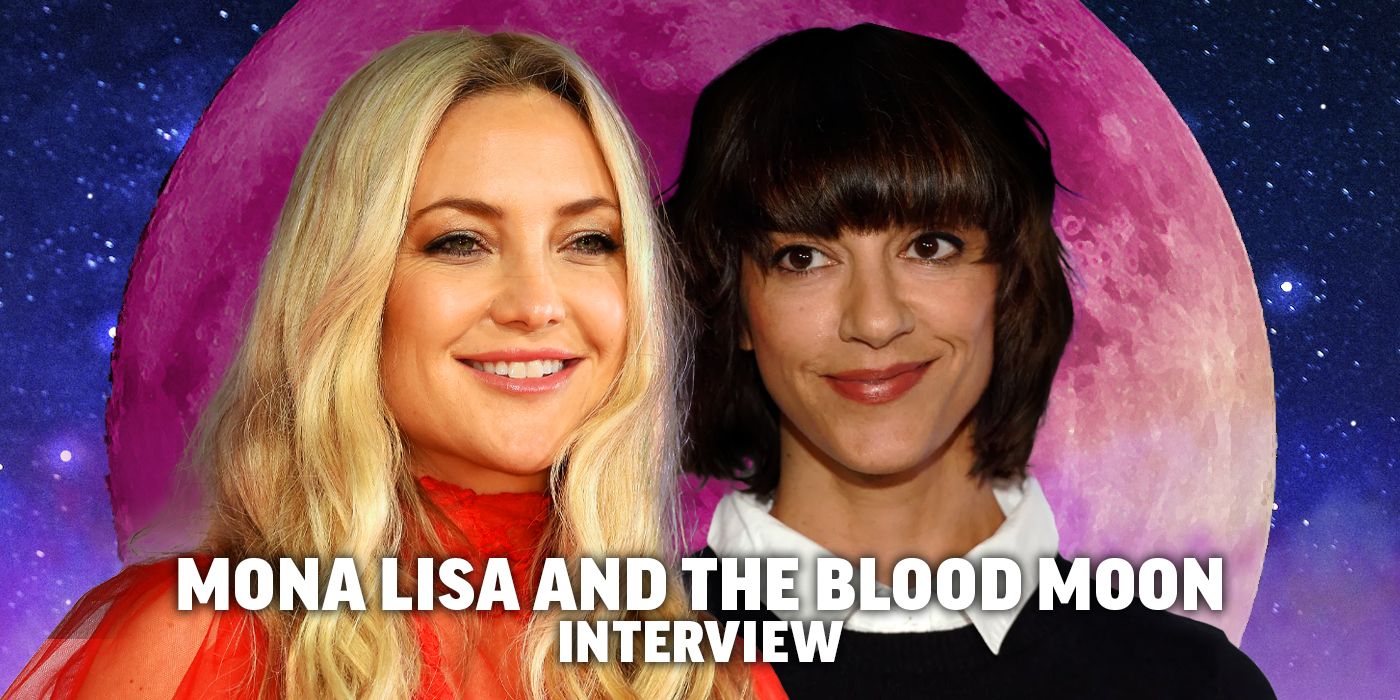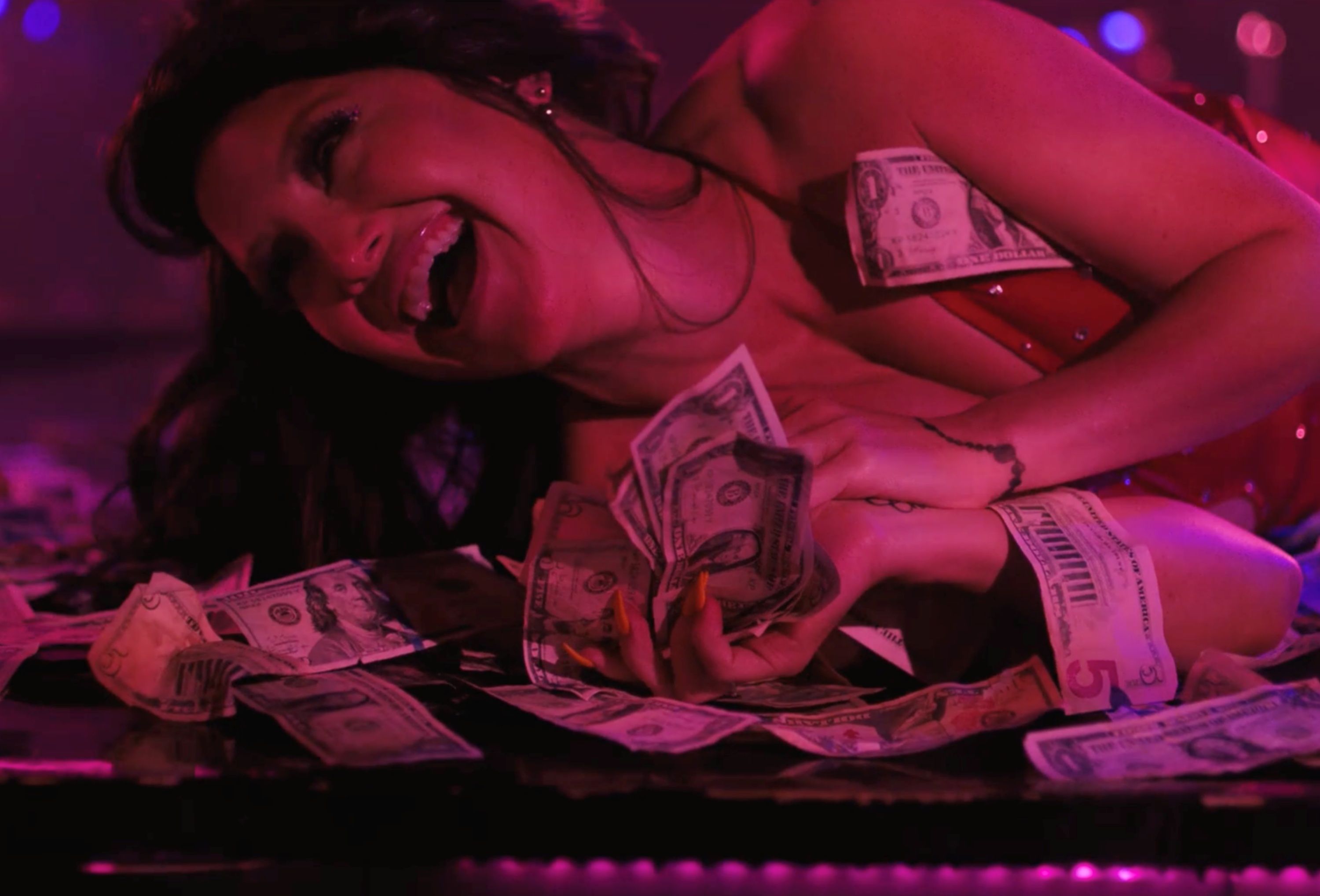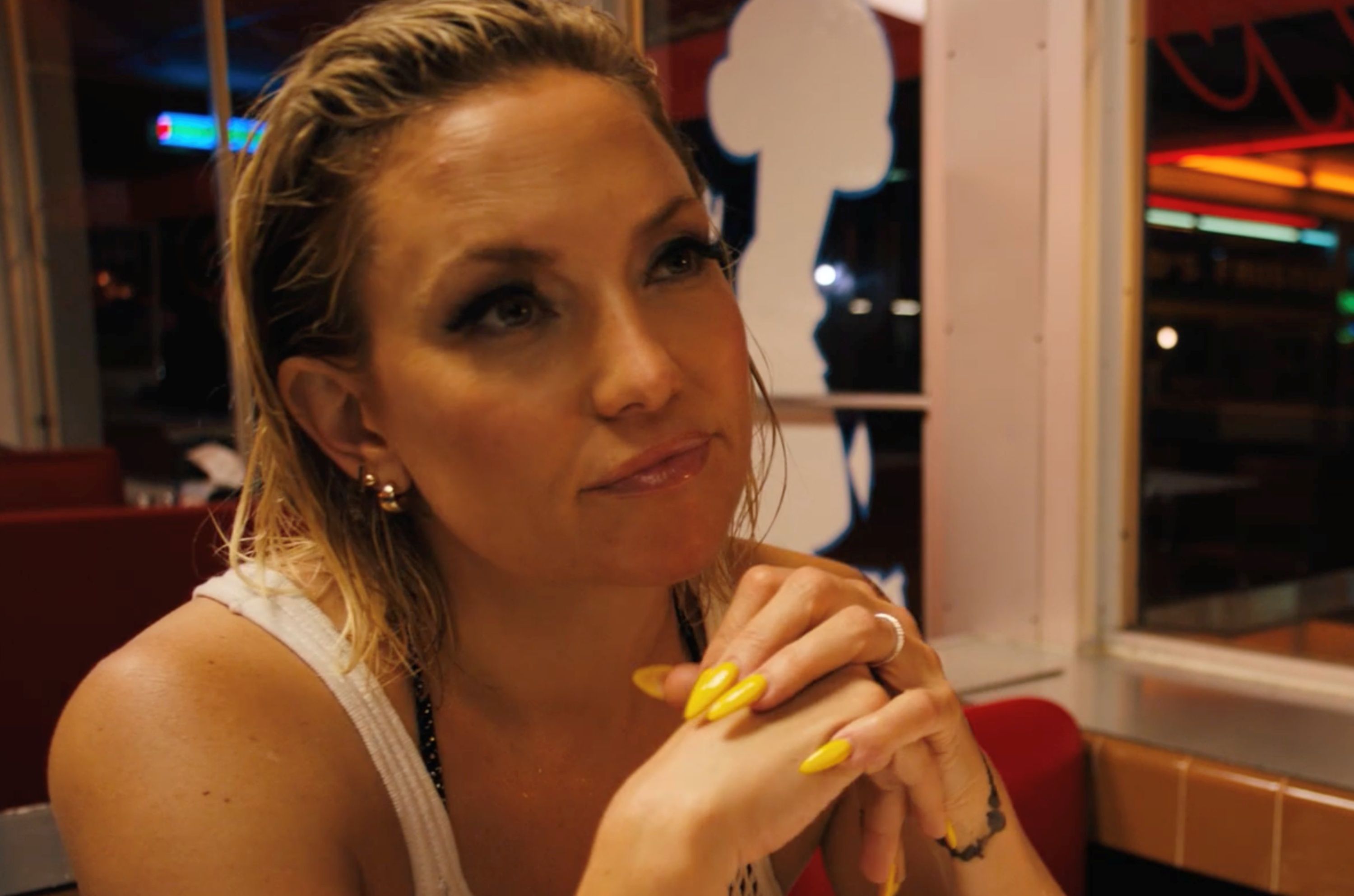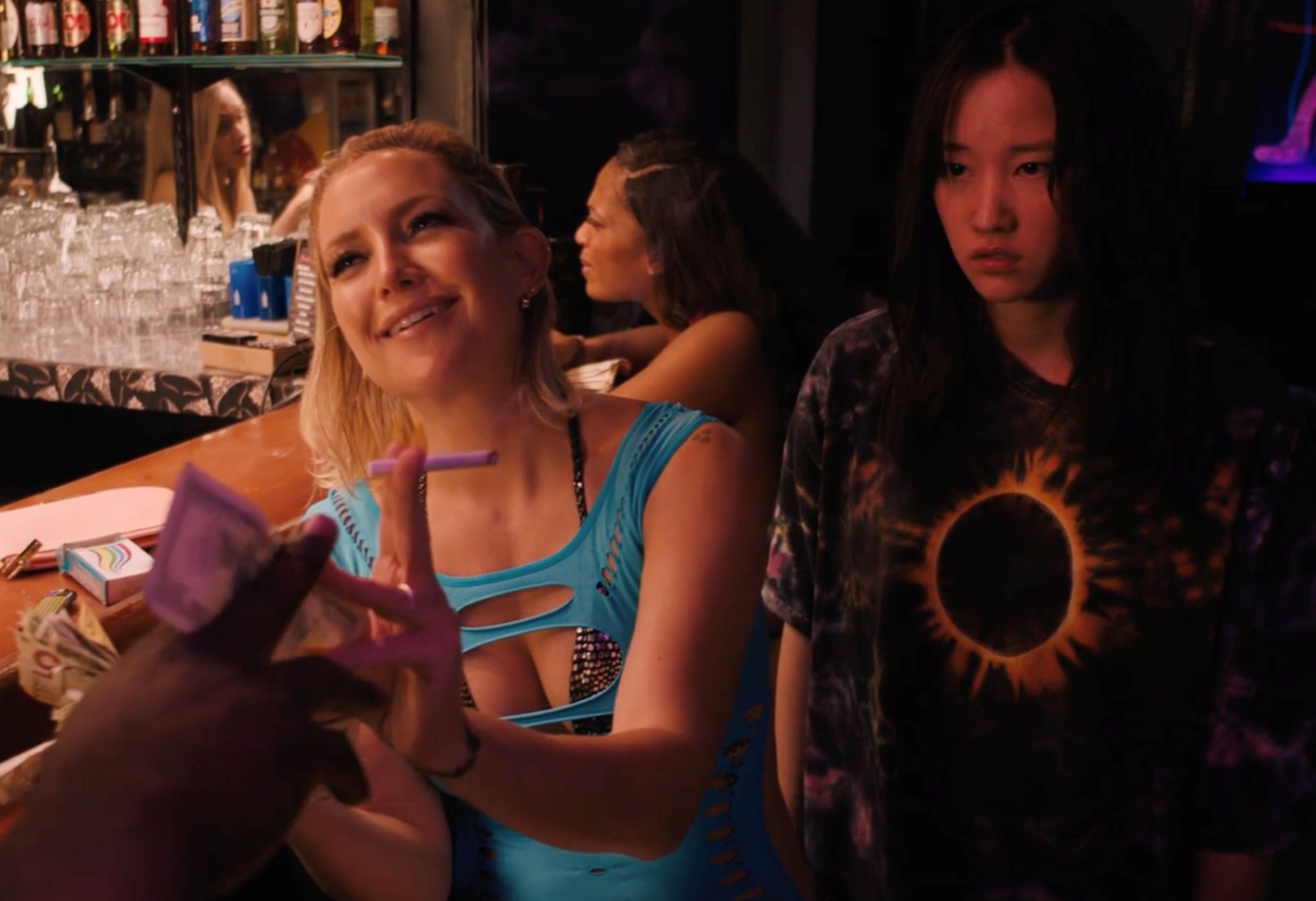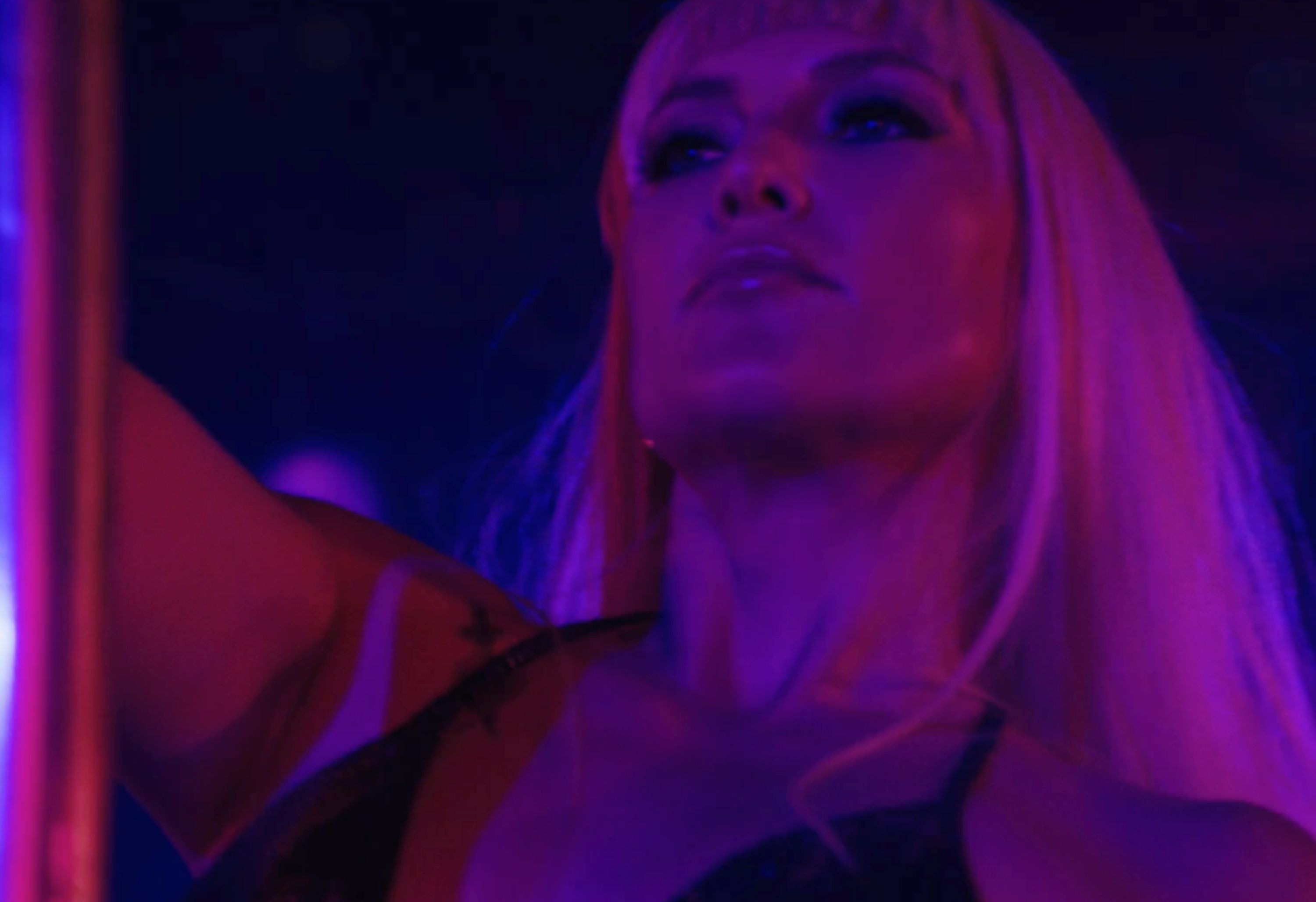From writer/director Ana Lily Amirpour (The Bad Batch), the sci-fi thriller Mona Lisa and the Blood Moon follows a mysterious woman (Jeon Jong-seo) with a very powerful ability, who escapes a mental asylum onto the streets of New Orleans. Once she’s out in the world, she finds herself in the orbit of Bonnie (Kate Hudson), a local stripper and single mother who’s always working an angle and who sees the usefulness in someone like Mona Lisa.
During this interview with Collider, Hudson and Amirpour talked about finding the true warriors for art, how everyone has their own process, whether they’re in front of or behind the camera, the appeal of playing a character like Bonnie, and authentically portraying the vibe of the strip clubs on Bourbon Street. Hudson also talked about what it was like to hear the audience reaction at the TIFF world premiere of Glass Onion: A Knives Out Mystery, while Amirpour talked bout the experience she had making one of the installments of Guillermo del Toro’s Cabinet of Curiosities.
COLLIDER: Lily, this movie is very punk rock, but also not easy to categorize, and it’s becoming clear that your movies can’t really be categorized very easily. Does that make things challenging when you’re trying to line up a cast, or do you find that works to your advantage?
ANA LILY AMIRPOUR: Because I’m doing things a very, very, very specific way, I think that it actually helps to eliminate the true warriors for art from the rest of everybody. And that’s who I’m interested in.
When I talked to you for The Bad Batch, you said that you’d written your third movie and that you would be directing that next, but you were a little superstitious about talking about it. Is this the film that you were talking about, at the time? Had you already written this back then?
AMIRPOUR: I had started writing it. I had started writing the next thing while I was editing the last thing because I need to escape when I’m editing.
That’s such an interesting process. I know some filmmakers like to fully finish one project before then focusing on another.
AMIRPOUR: In the edit, yeah. With The Bad Batch, I was cutting, for months, this dark vision of what America is. I was like, “Let’s go to New Orleans and have fun.”
KATE HUDSON: It’s fun to discover people’s process. My son just went to art school, and I’m so excited for him to get to connect to this world of artists who all have a different process, no matter what field it’s in – acting, directing, music. You’re right, everybody’s process is so different, and it’s fun to know what that is, for each individual.
Kate, when you read this script, what was your impression of Bonnie and the world that she’s in? What stood out to you about her and made her a character that you wanted to play?
HUDSON: I had never played a character like Bonnie before. What I’m looking for right now and what’s gonna take me away from my family is a good script, a great director, and a role where there are two or three scenes that I really cannot wait to play. That’s really what it ends up boiling down to. And Bonnie, as a character, the way she’s written, it was all on the page. Lily really put it on the page. It’s such a survivor story. Bonnie says everything that you’re not supposed to say, does everything you’re not supposed to do, and plays by her own rules. What a liberating character for me to be able to play. As an actor, those are the roles that are really fun. You get to put on a real character and transform. That was a blast for me.
When you read a character like that, that is so much on the page, do you still find yourself wanting to bring things to it, or do you work with what’s on the page?
HUDSON: Oh, my God, you can’t help but bring what you wanna bring to something, in anything that you do. It depends on your collaborator and who your leader is if they’re open to that or not. The great experiences are always collaborative experiences. We need to be able to have a collaboration, in order for us to feel confident putting out what we hope is what the director really wants.
AMIRPOUR: I change the script constantly. I don’t have so much time so far in my shooting schedules. We do rehearsals, and even just getting a few times of hearing them working it out, I’ll be like, “Oh, that’s better,” and I’ll change it. All through shooting, I’m like, “Okay, here are new [pages].” Live, she has a way of doing it and saying things. I love it because it’s always better. You have the script, and then they make it better.
HUDSON: Everyone has their own process. For me, Lily is a shooter. Her visuals are such a huge part of all of the movies that she makes. I knew, going in, that I had to know who Bonnie was very clearly because there were gonna be moments where she was gonna want something from me. I needed to be able to hold that space while she was focused on creating a really great shot that she had in her mind. When you’re working with shooters, I become more of a dancer. I’m like, “Just tell me what the choreography is, and I’m there for you,” which is a very different way of working than other films. That was really fun on this one.
One of the things that I find very interesting about this film is that Bonnie is a stripper, but she works at a club where the women are in bikinis. They’re not fully nude. It feels like, if a man were directing this film, in most instances, the women would be in the club naked, or at least topless. Lily, was that an intentional decision that you made, to have the strippers be in bikinis? Kate, was that something you insisted on? How did that come about?
AMIRPOUR: First of all, for sure, anybody doing it, it’s gonna come across differently. And definitely, men doing it, it’s gonna come across differently than girls doing it. I will say, those strip clubs on Bourbon Street, if it’s a slow night, they won’t take off their tops. They are in bikinis if it’s an empty room. It’s very true to the very specific, down-and-dirty, a little bit more mundane strip club that you would find on Bourbon Street. They sing for the money. It’s not like you just go in there and you’re gonna get a show. It was a chill night, that night. I find it very beautiful, sexy, romantic, nostalgic, and funny. That’s my essence of the sex, and these women being badass on this stage, and doing what they do, and hustling. It’s just my vibe on it. The music that I pick is gonna be different than that grinding music. All of that makes it feel different. Those were my choices, but all the girls that are in there are all strippers.
HUDSON: I also think that movies that have women as strippers, or especially movie stars, it’s annoying when they make it all about that because that’s not what it’s about. If the movie really is about a certain type of stripper, and you go really deep into whatever that is, then it’s understandable. If not, and not that this was Lily’s choice, but from my perspective, as an actor who is in the public eye, all of a sudden, that’s all anybody is asking about. It becomes a distraction versus a real part of the importance of the film.
AMIRPOUR: I find it really fascinating that the most valuable currency on earth is sex, and for sure, men have tried to be in control of that, for all of human history, but it’s still a big economy, as you can see. It’s a fascinating energy and space to watch this primal thing play out. What I cling to are the parts like where she’s wiping the pole at the beginning. It’s the exit and entry and staying with the person in the moment afterwards. A man is gonna go straight to it. I could go there if I needed to, but that’s not what that night was about. All those girls who were extras in the club are local dancers, and so many of them came up to me and said, “The vibe you have going on right now is so much more real than when guys do it.” They play extras as strippers in lots of other stuff that shoots in town, and they told me, “The vibe in here, right now, is so much more real to how it really is.”
HUDSON: When we went for our research night out, I think there was one girl who took her top off, but most of them didn’t. There were five people in there on a Tuesday. They were just moving around. It was a slow night and a slow shift.
Kate, what was it like to have the world premiere at TIFF for the Knives Out sequel, Glass Onion, and to see the reaction to that film? When you do something like that, that is so secretive, what’s it like to hear the response in a theater with an audience?
HUDSON: It was really amazing. I hadn’t even seen the movie, so it was scary for me because I’ve never done that before. But I hadn’t been in a movie theater that had that kind of response, ever. It was awesome. There was a feeling about it to me that felt like, “Oh, this is what the cinematic experience is like.” What a joy, that I get to be back-to-back in two movies that are really immersive and that are really about the cinema experience. Mona Lisa and the Blood Moon should be seen in a theater, and Glass Onion should be seen in a theater. These movies are made to have a fun experience and to go and disappear into a different world. As much fun as it was for me to have the TIFF experience with Glass Onion, going back to Venice and having my first experience with Mona Lisa and the Blood Moon, it wasn’t dissimilar. We had such an amazing response to this film. Coming out of COVID, we had a theater of people together. It was like, “What? How?” We forgot what that was like. And the music in Mona Lisa is so great. I hadn’t felt that in a long time. So, I feel really lucky that I get to be in both of these movies and have that experience that we all have, or at least me, as someone who loves film, longs for.
Lily, you’ve also directed an episode of Cabinet of Curiosities. What was that experience like?
AMIRPOUR: That was a movie. Guillermo del Toro’s whole thing was to do eight one-hour standalone movies. What was it like? Guillermo is a friend and he was like, “Do whatever you want. You can change it.” I rewrote the script. It was a script that someone gave to me, and I rewrote it and basically made it my own. It’s not the same crew for each one. It’s totally not like TV. It’s like a movie. I loved it. I got to spend that Netflix money and have the right amount of days to shoot. It was literally the first time. I was like, “Oh, this is how it’s supposed to be. This is what everyone else gets.” That extra eight days is really amazing.
HUDSON: Oh, my God, that’s luxurious.
AMIRPOUR: I’m like, “How many movies do I have to make before I can get a 40-day schedule? Come on!” It’s not even that greedy. It’s not like I’m asking for 50 days. But anyway, it was joyful. I think it’s really funny, twisted, and fun. Mine isn’t really horror. Mine is like Death Becomes Her meets American Psycho. That’s what I pitched.
HUDSON: I love that!
Mona Lisa and the Blood Moon is in theaters and on-demand.

